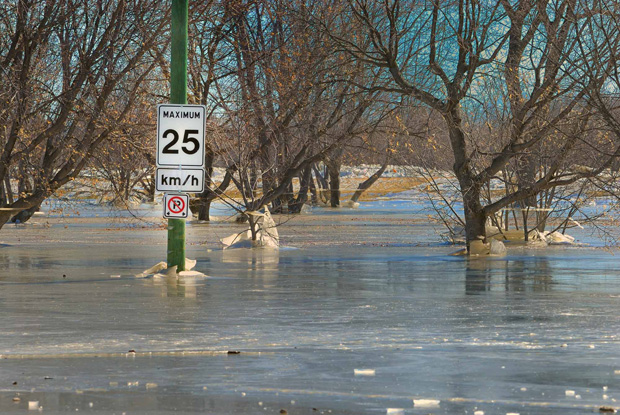Normal to well-above normal soil moisture and winter precipitation to date, combined with future unfavourable weather conditions, will result in the risk of moderate to major overland flooding across the province. This announcement was made by Infrastructure Minister Blaine Pedersen in release of the 2017 January Conditions Report.
“We have experienced some unusual winter weather to this point that has contributed to an expanded risk of overland flooding in Manitoba,” Pedersen said. “At this time, we need to be aware of the potential for flooding with the understanding that we have a couple more months of winter weather and the uncertainty of the spring melt rate. The Manitoba Hydrologic Forecast Centre will continue to assess data over the coming weeks to refine future flood outlooks.”
The 2017 January Conditions Report is being released due to the high soil moisture and winter precipitation to date. The potential for overland flooding is estimated as moderate to major in most areas of the province. The report notes this could change depending on weather conditions between now and the spring melt, with February and March flood outlooks further defining the flood potential.
The province’s practice is to plan and prepare for unfavourable weather conditions and the scenario of highest flood risk, the minister said. At this time, with future unfavourable weather conditions:
- the Red, Souris, Pembina, Lower Assiniboine and Roseau rivers and the southwest region of the province are currently at risk for major flooding;
- the Upper Assiniboine River, eastern region, Winnipeg River, northern Manitoba and The Pas regions including the Saskatchewan, Carrot and Swan rivers, are currently at risk for moderate to major flooding, and;
- the Interlake region and the Fisher River are currently at risk for moderate flooding.
Flood forecasters look at six primary factors when assessing long-term prospects for potential spring floods, Pedersen said. In addition to soil moisture at freeze-up, other factors yet to be determined are winter snow, spring rain, how fast the snow melts, the depth of frost, and river and lake levels prior to spring run-off.
The Manitoba government and municipalities are continuing to prepare for spring flooding. This includes working with municipal emergency management teams to review existing emergency response plans and sharing information through conference calls and flood information seminars in Morris, Brandon and Selkirk.
The first full flood outlook is expected at the end of February. The 2017 January Conditions Report is available at www.gov.mb.ca/flooding.




